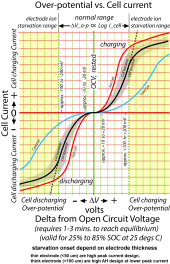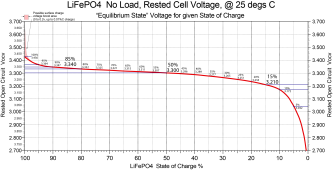linuxnewbie
New Member
- Joined
- Jun 14, 2021
- Messages
- 34
Hi team members
I am interested in knowing how to create my own SOC vs OCV chart for an LFP cell type, here's what I have done previously
1- Performed capacity test and make this cap a fixed value to be discharged/charged in small increments wrt to percentages of SOC
2- in my case I choose 3500mAH as my base capacity and then I discharged 1% from beginning and end-stage and 5% in the middle since voltages basically flat
3- for every percentage of chg/dchg I gave a cell resting time of some hours and finally got my plot
my doubt here is that even tho my cell was charged to 3.65V but I started the test after some hours and then my cell voltage started at 3.3-3.4V something, here how can I define my 100% soc when my cell never began from 3.65V?
here's my battery spec sheet, if anyone is interested in the cell data
I am interested in knowing how to create my own SOC vs OCV chart for an LFP cell type, here's what I have done previously
1- Performed capacity test and make this cap a fixed value to be discharged/charged in small increments wrt to percentages of SOC
2- in my case I choose 3500mAH as my base capacity and then I discharged 1% from beginning and end-stage and 5% in the middle since voltages basically flat
3- for every percentage of chg/dchg I gave a cell resting time of some hours and finally got my plot
my doubt here is that even tho my cell was charged to 3.65V but I started the test after some hours and then my cell voltage started at 3.3-3.4V something, here how can I define my 100% soc when my cell never began from 3.65V?
here's my battery spec sheet, if anyone is interested in the cell data





